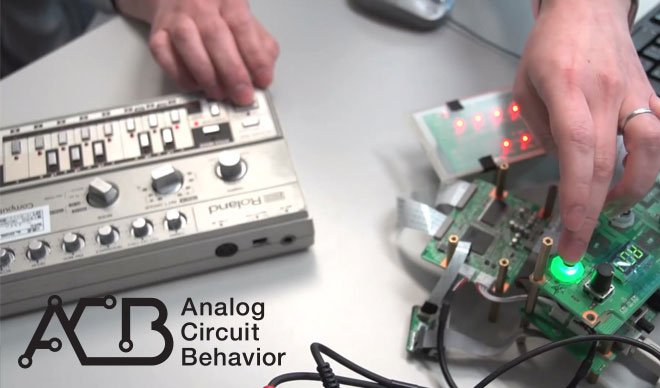Everything you need to know about Roland’s Analog Circuit Behaviour technology to recreate classic analog instruments.
Analog Circuit Behaviour (ACB) is the technology behind the authentic sound and responsive behaviour of Roland’s AIRA products. It faithfully reproduces the sound of some of Roland’s most admired and respected classic instruments. This was done by using the original design specifications and consultation with the original engineers. There was also a detailed analysis of each analog circuit.
Analog electronic musical instruments consist of various analog components. This includes resistors, capacitors, and transistors. Interestingly, the unique sound of these instruments is due to the distinctive characteristics of the individual components. The so called “vintage” instruments have an extremely distinctive sound and behaviour. This is due to the variable instability of the electronic components.
What are some of the classic instruments that are bought back to the future using ACB technology?
Classic Roland rhythm machines and synthesisers such as the TR-808, TR-909, TB-303, and SH-10, are extremely popular even today, thirty years since their conception. This is because musicians and producers from around the world have loved their unique sound. As a result, they have been used to create entirely new genres of electronic music.
Roland aimed to pick up where these analog classics left off and developed a completely new technology. This technology models the traditional analog circuits, right down to the way the individual circuitry and components behaves and reacts with each other.
Analog Circuit Behaviour (ACB) is extremely different from conventional methods of modelling. For instance, it reproduces each analog component by thoroughly analysing each detail of the original design drawings. This is achieved by combining the analysed components in exactly the same manner as the original analog components. As a result, the detailed characteristics of the original musical instruments can be reproduced completely.
How does the process work?

This analysis process requires knowledge and understanding of the design and development the original analog instruments. It’s not possible to reproduce the original sounds just by logically analysing the analog circuits. This is because the original engineers used a design approach which maximised the capabilities of the analog components. Throughout the development of ACB, Roland worked with the original engineers who designed and developed these iconic instruments. With their knowledge and experience, Roland could ensure that they fully reproduced the ideal state of their creations.
ACB utilises the enormous calculation power of state-of-the-art DSP. Consequently, they precisely emulate the analog-specific characteristics of Roland classic gear. Impressively, they also delve into areas the original engineers tried to go but ultimately gave up on.
ACB empowers Roland AIRA products to go beyond mere re-creation. This is done by making instruments that inspire and respond to your creativity.
Recreating the past, designed for the future.
Roland’s Analog Circuit Behavior (ACB) technology, is used to carefully analyze every aspect of analog circuits. They then faithfully recreate them down to the finest details. This technology creates a fusion of beautifully classic and utterly modern synthesizer tones.
ACB provides the ability to recreate the synthesisers that boast the expansive and liquid tone of the original synths. As a result, they are modern reproductions of the now-legendary instruments.
ACB technology integrates the features of the original synths. This results in incredibly fat and uniquely versatile synths. It also provides the ability to import “plug out” versions of other classic synths into Roland’s new instruments.



